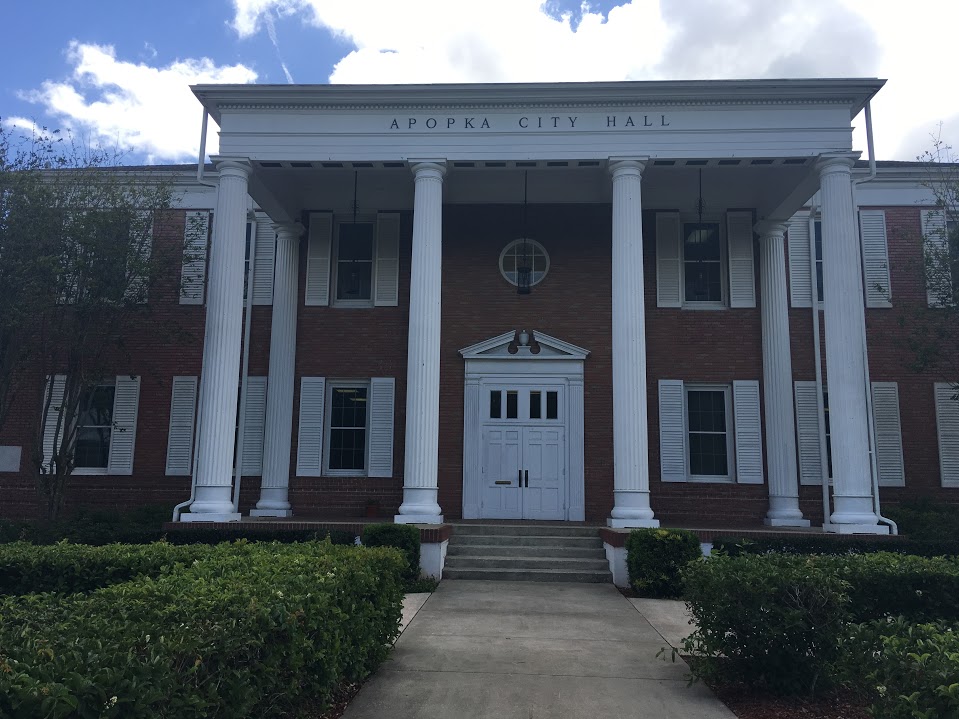
Key Points
Multi-year plan for rate increases also considered
A company that did a study on the city’s utility rates recommended increases of 15.5% in water and wastewater, 15% in sanitation and 20% in stormwater for the fiscal year (FY) 2026 budget.
Henry Thomas, senior vice president of Raftelis, a local government and utility management consulting firm, presented the results of the utilities rate study at the July 17 budget workshop at Apopka City Hall.
Such rate increases would fund infrastructure projects, maintain and replace aging equipment, build up cash reserves, keep up with growing infrastructure needs, and stay competitive with other local municipalities and utilities, Thomas said.
“We would recommend you adopt the proposed adjustment plan,” Thomas said. “We would conclude that it will maintain positive cash flow, that it’ll meet coverage requirements for any borrowing that we’ve assumed, and that operating reserves will build up and remain at targeted levels.”
For an average residential customer using 6,000 gallons of water, this means that the water/wastewater bill will increase from $71.38 to $82.46 per month, the sanitation bill, from $23.13 to $26.60 per month; and stormwater assessment, from $475 to $570 annually, according to Thomas.
What’s more, after 2026, Thomas recommended rate adjustments of 15.5% in 2027 and 3.5% for water and wastewater in 2028 and 2029, and 6.5% per year until 2029 for sanitation. No multi-year rate plan for stormwater exists at this time.
At the budget workshop, the City Council requested city finance director Blanche Sherman to dispatch notices to residents about the proposed rate increases for water and wastewater, sanitation and stormwater by Aug. 1.
Impact fees
Raftelis’ study also evaluated impact fees and potential needed adjustments. The purpose of impact fees is to make sure new development help pay for infrastructure costs, pay for the expansion of public safety amenities, recreation areas, and other city infrastructure, and relieve the strain on existing residents to pay for growth-related expenditures.
Thomas said his firm recommends that police impact fees increase from $747 to $1,262 per dwelling unit; fire impact fees, from $708 to $1,511 per dwelling unit; and parks and recreation impact fees, from $1,060 to $1,358 for single-family units.
The total combined impact fees would go up from the current $2,515 to the proposed $4,204.
There are legislative restrictions that would make it hard to implement full impact fee increases, including keeping a maximum increase at 25% of the current rate. Increases must also be done over two-year increments, can’t exceed 50% of the current fee without “extraordinary circumstances,” and only be increased once every four years, Thomas said.
When Commissioner Nick Nesta asked Thomas if Raftelis has a projected rate increase plan for impact fees similar to what was created for water and wastewater, Thomas said Raftelis does not currently have an updated plan for that.
“You need to work on that because you’d ultimately like to know where that rate needs to land,” Thomas said. “But I think you know any effort to kind of try to increase it without putting too much burden on people is smart right now.”
The City Council plans to discuss impact fees at the Aug. 6 meeting, specifically historical data on when impact fees were last increased and possible implementation strategies.
The actual rate adoption and final FY26 budget hearings will occur in September.
The tentative FY26 city budget hearing is set for 5:15 p.m. on Sept. 3 in the Apopka City Hall Council chamber, where the council will vote on whether to keep the FY26 proposed millage rate at 4.6876 again FY26, a 6.18% increase over the rolled back rate of 4.4146.
The rolled back rate is the rate that would produce about the same amount of revenue as the previous year’s rate.
The 4.6876 mileage rate would yield about $36,617,203 in property tax revenues for 2025-26. A mill rate is the tax rate for each $1,000 of taxable property value.
The total FY26 general fund revenues are projected to yield nearly $103,041,608. The city’s general fund service levels, personnel and capital needs show a total operating and capital budget of about $108,611,697.
The fiscal year runs from Oct. 1 to Sept. 30.
Editor’s note: This story has been updated to correct the recommended impact fee schedule for police, fire and parks and recreation.
Suggested Articles
No related articles found.

